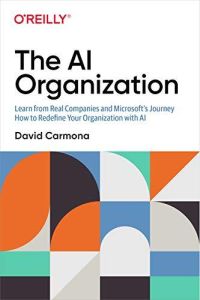
Recommendation
Touted as the “fourth industrial revolution,” artificial intelligence is set to surpass other technological innovations in its breadth and scope. Organizations must recognize that while AI is still an evolving system, the time to build it into every facet of your company is now. Microsoft AI developer David Carmona has both the technical expertise and big-picture perspective on how organizations can foster AI solutions in their technical departments, business units and among their employees. Whether your enterprise is in the public or private sector, in manufacturing or HR or sales, AI will transform your systems. For the unprepared, AI will arrive like a tsunami. With this guide, your organization can ride the wave.
Summary
About the Author
David Carmona has more than two decades of experience in the technology industry. He began his career as a software engineer, and has held a variety of technical and business leadership roles at Microsoft, both in Redmond and internationally.
By the same author
Learners who read this summary also read
Related Skills













































































Comment on this summary